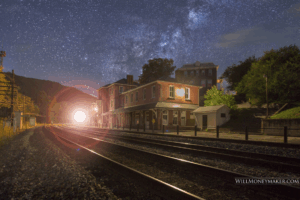Photography projects are a lot of work, often spanning weeks, months or years to complete. And, you’ll find lots of tips on how to plan and structure your project — the gear that you’ll need, the list of shots that you need to remember to take, the storytelling aspects of a project. If you page through my blog, you’ll even find advice on some of these topics.
All of these things could be considered the mechanical side of the project: What you will do when you will do it and with what tools. There is a whole other side to planning a photography project, one that should be considered at the outset of the project and, in part, should be undertaken as you work through each of the project’s steps. This is more the theoretical side of things, or, I suppose, you could say, the artistic side, since most of the planning tips that I will outline here deal with creativity in one way or another. Take a look at the following thoughts — perhaps they will help you as you plan your own photography projects!
Giving Yourself Time
Part of planning a project like this involves making sure that you have enough time to attend to all the details. This isn’t so much about setting deadlines to get the work done as it is about making sure that each phase of your project has enough time for you to do the work and also some extra time built in so that you have the chance to pause and think about things. You’ll need time to think and refine your ideas and you’ll also need time to go back and fix things once you’ve decided that certain aspects of your project aren’t working out.
Make sure that you plan each stage of the project around this. Figure out how much time you need for the mechanical aspects of the project and how much time you might like to ponder things as you do them. Then, when it comes time to set yourself deadlines, you’ll know that you’ve left enough room in your schedule to get the project done smoothly.
Give Yourself Freedom
In the above section, I mentioned giving yourself time to fix things. You also need to give yourself the freedom to fix things. This, I think, is incredibly important. Just because you have a well-thought plan at the outset doesn’t mean you must adhere to it, start to finish. Realize at the outset of the project that, between starting and finishing, everything can change along the way. You may start out photographing songbirds, for example. Then you capture an eagle on camera and the project becomes about birds in general. Then, when you’re out birdwatching, you capture images of deer, squirrels, and other animals — now the project evolves again, exploring the lives of wildlife in a particular region. As you can see, it’s easy for projects to morph like this. So long as you’re not bound by editorial guidelines, then give yourself the freedom to let the project change.
Do Some Writing
When it comes to projects like these, writing is almost as important as taking the photographs. First of all, you’ll definitely want to write down your goals and deadlines. Ideas, too. Ideas are such an ephemeral thing — here one moment and gone the next. Keep a small notepad in your pocket or a journal in your bag and you’ll be able to jot these things down as they come to you, before you forget them. These are all effective ways to monitor your goals, stay on task and do a bit of brainstorming.
But there is another thing that may be helpful for you to write down. As you work on your project, particularly as you are on location, taking the photographs, you may find it helpful to write down your thoughts in the moment. If your project will eventually become a book or if you anticipate the need to write any sort of exposition to go with this project, then these thoughts will only happen once. Like your ideas, in the moment thoughts are fleeting — and they can help you write an exposition that feels real, that immerses the reader in your work. Jot these things down as you think them to smooth out the final stages of your project.
Make It Personal
As you work through the project, as you pause to think about how you could be doing things differently or what new ideas you may add to it, you should also give yourself some time to reevaluate your project and examine your motivations. For a project to be successful, for it to tell a story that resonates with others, it isn’t enough to simply have an idea. You’ll need to find a way to make it personal.
What makes photography personal? The short answer is: you. To clarify, making photos personal means creating something that is meaningful to you, something that you were inspired to make. It’s not simply a pretty picture but something that you created because for you, there is deep symbolism behind it. To accomplish this, approach your subject material from all different angles. Think about it and how you relate to or interact with the subject material. Find out what your own unique perspective on the topic is, then enrich your work by adding that perspective to it.
Do Plenty of Research
One thing that is sometimes ignored when embarking on a photography project is raw knowledge. I’m not speaking of knowledge about photography or art. Rather, knowledge of your subject material. In order to get those priceless shots, to display your subject to its best effect, it helps to know as much as you possibly can about it. To use songbirds as an example again, you’d be well served to not only be able to identify them on sight but also to know about their habitat, their range, the types of foods that they eat and so on. These are all clues that you can use to create works that have real depth. So, as you work on your project, be prepared to do plenty of research — and, study the works of other photographers who have done similar projects. Get to know the subject material intimately in order to photograph it expertly.
Photography projects are a lot of work — not just planning the where, when and how, but also the motivations and driving thoughts behind the project. Keep a few of these things in mind as you work. You’ll find that your project comes together easier, and the finished result will be more polished.
Now go and enjoy the beauty of God’s creation through your lens.




